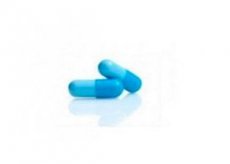Medical expert of the article
New publications
Preparations
Sodium oxybutyrate
Last reviewed: 03.07.2025

All iLive content is medically reviewed or fact checked to ensure as much factual accuracy as possible.
We have strict sourcing guidelines and only link to reputable media sites, academic research institutions and, whenever possible, medically peer reviewed studies. Note that the numbers in parentheses ([1], [2], etc.) are clickable links to these studies.
If you feel that any of our content is inaccurate, out-of-date, or otherwise questionable, please select it and press Ctrl + Enter.

Indications Sodium oxybutyrate
It is used to eliminate the following disorders:
- pathologies of the neurotic type;
- glaucoma;
- sleep problems;
- psychoses arising after surgical intervention;
- severe hypoxia.
Along with this, the drug is used in surgery - as a means of induction anesthesia during non-cavity type operations, while maintaining the spontaneous type of breathing process.
Pharmacodynamics
Sodium Oxybutyrate usually interacts with different endings, affecting the activity of various channels, including Ca2+ and K+ channels. As a result, the process of releasing activating conductors located inside presynaptic receptors is inhibited. This leads to postsynaptic slowing. The drug also has a suppressive effect on the NS.
In case of using small doses of the drug, an anxiolytic effect develops, the severity of neurotic disorders decreases, as well as individual vegetative manifestations in response to stress. The drug also has a hypnotic effect.
In high doses, the drug is used as a means of muscle relaxation and general anesthesia. At the same time, anticonvulsant, sedative and anti-shock effects develop. At the same time, elements of nootropic action can also be observed.
During therapy, the general resistance of the organism increases, as well as the heart with the brain and other organs in relation to oxygen deficiency. Improvement of microcirculation processes, increased glomerular filtration activity and stabilization of renal activity in case of blood loss are also observed.
It was found that the drug is able to pass through histohematic barriers.
Dosing and administration
The drug can be used orally, as well as for intramuscular and intravenous injections.
If general anesthesia is required, the solution should be injected into the vein very slowly - a maximum of 1-2 ml/minute. If anesthesia needs to be maintained, the drug is administered additionally - at a dose of 40 mg/kg. For induction anesthesia, children are prescribed 100 mg/kg (a glucose solution is added to the drug, drop by drop) for 5-10 minutes.
When administering the drug intramuscularly, the dose is 120-150 mg/kg.
Adults need to take 100-200 mg/kg of the drug orally, and children – no more than 150 mg/kg.
Use Sodium oxybutyrate during pregnancy
It is prohibited to use Sodium oxybutyrate during pregnancy (the only exception is obstetric procedures).
The medicine should not be used during lactation because it has a sedative effect on the baby.
Contraindications
Main contraindications:
- hypokalemia;
- severe forms of toxicosis in pregnant women, against the background of which there is a syndrome of increased pressure and hypokalemia;
- myasthenia.
 [ 20 ]
[ 20 ]
Side effects Sodium oxybutyrate
It has been found that in the case of rapid intravenous injection of the solution, the appearance of individual side effects is possible: respiratory dysfunction, a feeling of psychomotor agitation, vomiting, a feeling of drowsiness, severe nausea, and also hypokalemia.
Overdose
As a result of poisoning with the drug, a feeling of excitement, twitching of the limbs may occur, and sometimes respiratory arrest may also be observed.
 [ 30 ]
[ 30 ]
Special instructions
Reviews
Sodium oxybutyrate is often discussed on various forums dedicated to medicine. However, reviews of it often have little to do with its medical effects - patients usually use it for completely different purposes.
For example, some users report using the drug as a substitute for an alcoholic drink. It is important to understand that this substance causes very rapid addiction, which leads to complications that are more powerful in their negative impact than the result of alcohol addiction.
At the same time, patients ask many questions related to the specifics of using the drug - about using this product independently at home, about the place of purchase, and also about the dosage sizes for treating various disorders.
 [ 35 ]
[ 35 ]
Attention!
To simplify the perception of information, this instruction for use of the drug "Sodium oxybutyrate" translated and presented in a special form on the basis of the official instructions for medical use of the drug. Before use read the annotation that came directly to medicines.
Description provided for informational purposes and is not a guide to self-healing. The need for this drug, the purpose of the treatment regimen, methods and dose of the drug is determined solely by the attending physician. Self-medication is dangerous for your health.

